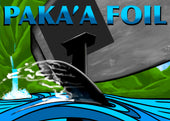I have been passionate about water and wind sports since my early teen years. I remember teaching my friends on a huge Dufour Wing windsurf board on our local lake growing up. This was later formalized as a windsurfing instructor at the Naval Academy for a few summers with some one design racing in the spring. After college and as a Surface Warfare Officer in the Navy, I was lucky enough to be stationed close to many good windsurfing spots and even tucked away my gear in an empty fan room onboard my ship for one deployment.
Around 2003 and while working in the semiconductor industry in the San Francisco Bay area, I started kitesurfing and over the next few years transitioned completely to that sport, loving the portability and the huge air opportunities.
I traveled with a kite and twintip board thru the years and did a lot of staff officer duty back in the Navy. That culminated when I retired full time from active duty and started working on Kauai out of uniform but still for the Navy.
In 2018, I fell hard for foiling and after many hard falls, decided to focus on prone surf foiling and wing foiling as well as sharing my insights with others to shorten the learning curve. Teaching foiling and guiding people for gear and sessions has been a privilege that I hope to continue for many many years.











